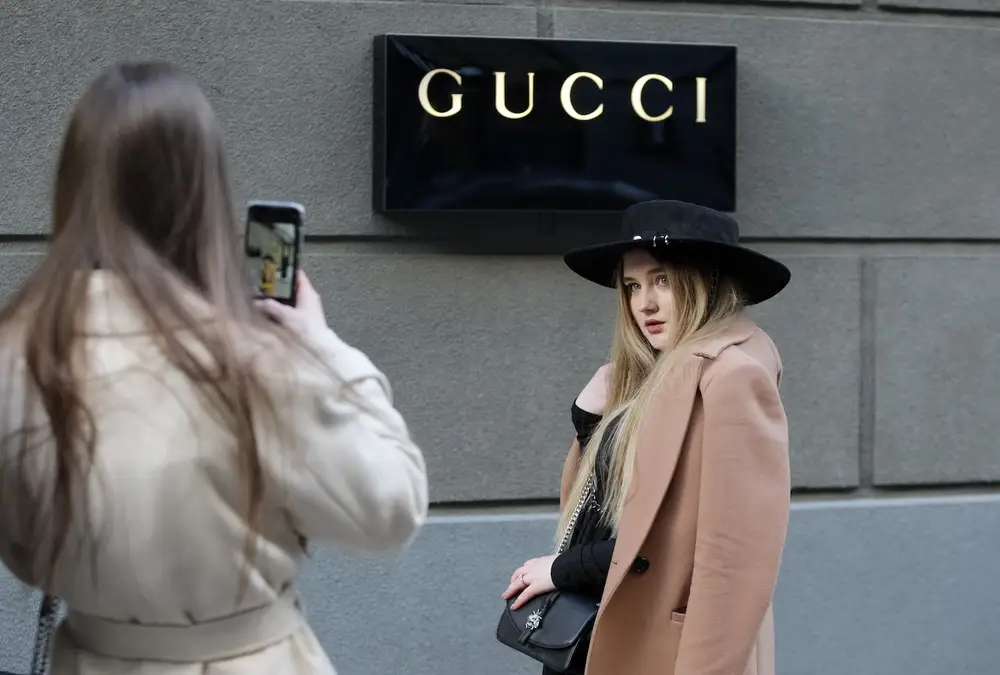Luxury brands forgot about Gen Z. They can’t afford to make that mistake again.

Gen Z’s growing spending power makes them key to the luxury market.
The first people to shop at Hermès are long gone, as are those at Louis Vuitton and Prada. Yet, the brands still exist because their ultimate goal is to continuously train new generations to fall in love with luxury.
But now it appears that some luxury brands have forgotten that aim.
After the pandemic, luxury players took their eye off the ball with Gen Z, a generation Bain & Company estimates could account for nearly a third of all luxury purchases by 2030. Industry experts say brands took advantage of inflation by hiking prices and heavily focused on their wealthiest clients with VIP experiences, essentially putting aspirational consumers on the back burner.
Two years later, this strategy seems to have backfired, shrinking the luxury customer base by 50 million, Bain reports in its 2024 luxury study, published Wednesday.
“There’s been a kind of a refocusing, probably an over-correction of the strategy, to focus on the top of the pyramid that was more resilient in a moment of turbulence,” Claudia D’Arpizio, senior partner and global head of Fashion and Luxury at Bain told B-17.
“Luxury brands aim to stay forever,” Blanca Zugaza Escribano, a fashion and luxury consultant at Metyis, said.
But to do that, brands “need to keep an eye on both sides of the business,” she added. And that includes winning back Gen Z through decisive strategy shifts, creative partnerships, and affordable luxury.
Training the next generation
D’Arpizio said that to get Gen Z back on board, luxury brands must adopt a “high-low” strategy, part of which entails releasing affordable products that appeal to younger, aspirational consumers and their core clientele.
Fragrance, beauty, and eyewear — categories that have shown resilience through the industry-wide slowdown — could be key to this strategy.
In its most recent earnings results, LVMH reported that perfumes and cosmetics delivered the strongest growth across sectors in Q3, up 3%. This division was up 5% for the first nine months of 2024 compared to the previous year.
Meanwhile, Kering’s beauty and eyewear divisions were also one of the few highlights from its own latest earnings, delivering 7% same-store sales growth in Q3.

Prada found success with Gen Z in the form of its $50 lip balm used by Sabrina Carpenter in a recent music video.
Jamie Ray, the CEO of Buttermilk, a marketing agency that works with luxury brands, said his company’s work to help launch Prada’s beauty range in the US this year through nano influencers on TikTok, coupled with Sabrina Carpenter whipping out one of its lip balm’s in a music video, is a prime example of how brands can and should try to resonate with Gen Z.
“The broader issue I think every luxury fashion house or conglomerate has is: ‘We can’t sell a $5,000 handbag to a 21-year-old,” he said. “‘But we can sell a lip oil, or we can sell foundation, and they still get some sort of emotional attachment.'”
Not only do affordable products align with Gen Z’s current spending power, but they can develop lasting brand loyalty, which Escribano said will pay off long-term.
“That little piece of luxury that you’re carrying with you is already building you into a potential future customer if you ever have the means to actually purchase the products that are aimed at the higher net worth customers,” she said.
Getting Gen Z excited to spend
But putting out affordable products is only half the work. The other half is getting Gen Z excited to spend on them.
Escribano said one key way brands can do this is by embracing Gen Z’s love of experiences and showcasing the brand in creative ways.
Thomaï Serdari, a luxury marketing and branding professor from NYU’s Stern School, previously told B-17 that luxury brands also increasingly see sports as an opportunity to connect with younger consumers.
But relying on partnerships has risks, as Gen Z is more discerning than previous generations, Escribano said. Those that come across as superfluous or not in alignment with a brand identity could be unsuccessful.
“It’s not let’s collaborate to push a collection with this random person who’s now super hot on Instagram or who’s super popular,” Escribano said.

Smart partnerships with companies in the sports sector are lucrative for luxury brands.
Ray of Buttermilk said that some luxury brands have been hesitant to explore collaborations as a means of engaging Gen Z consumers because they fear losing their luxury allure.
“The brands that have struggled probably are the brands that are more heritage brands,” he said. “They’ve got such a true sense of who they are, almost to their detriment. They’re too scared to reinvent themselves.”
The future is vintage
Luxury players might be kicking themselves for alienating Gen Z consumers, but Gen Zers never forgot about luxury.
The proof is in the meteoric growth of the secondhand luxury market, which Bain reports reached $47 billion in 2023.
Not only do secondhand luxury marketplaces like The RealReal satisfy Gen Z’s love of gamification and collecting, but they are “serving their “unmet demand,” D’Arpizio said.
But secondhand’s success isn’t bad news for primary luxury brands, Escribano said.

Leaning into Gen Z’s love of vintage won’t hurt luxury brands, either.
“There’s no cannibalization between secondhand and firsthand,” Escribano said. “A customer that’s actually a VIC — a very important customer — for The Row or for whatever luxury brand, they’re not going to go into secondhand to save.”
Bar certain luxury products like Hermès Birkins handbags, secondhand luxury is by and large cheaper and retains a level of exclusivity, she said. “It also has this sustainability factor to it that is growingly important to younger generations,” she added.
By dedicating more initiatives to secondhand, collaborating with resell companies, or releasing slightly more accessible specific pre-loved lines, luxury brands can connect with Gen Z consumers while avoiding alienating their top 1% of consumers.
“It’s another amazing entry point for younger customers,” she said.






